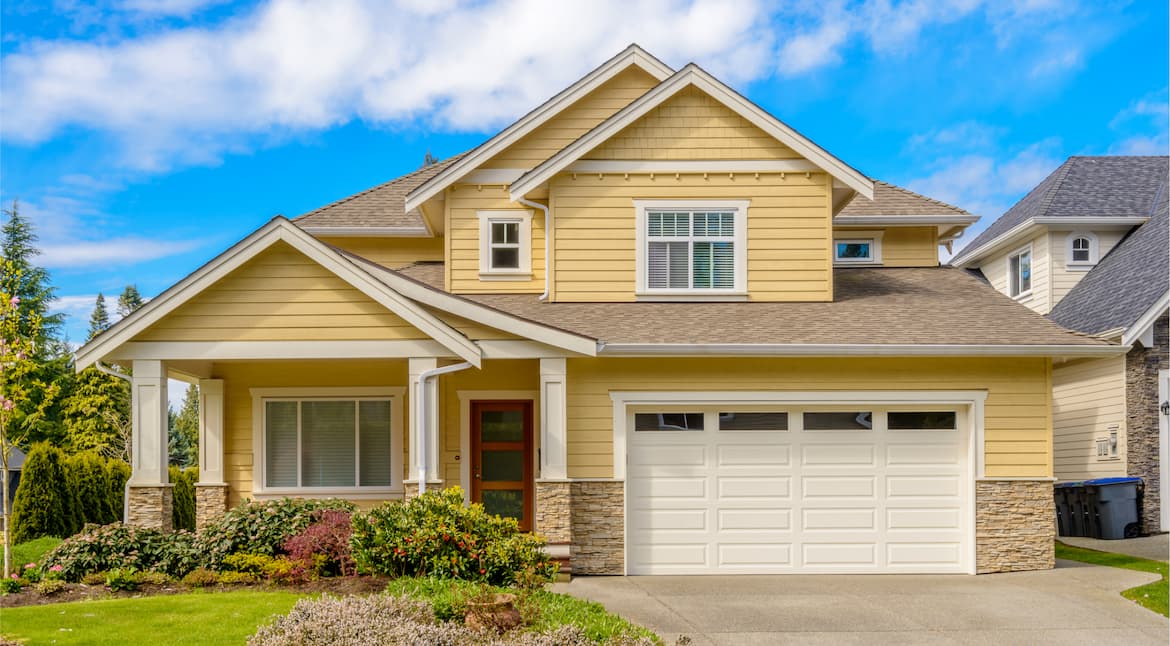How Much Does Vinyl Siding Cost?
Are you putting off that much-needed home renovation because you’re worried about the costs? Vinyl siding offers a cost-effective solution that can transform your home’s appearance and improve its value without draining your savings.
Vinyl siding can range from $6,000 to $16,400, with the average cost being around $11,100. The final price depends on the size and style of your home, the type, style, and brand of siding you choose, and the labor rates in your area.
In this article, we’ll explore all the factors that can impact the overall cost of vinyl siding and share some smart money-saving tips to help you keep expenses down.
What’s the Average Cost of Vinyl Siding?
Vinyl siding can boost your home’s curb appeal and efficiency without breaking the bank, but you might wonder, “How much does it cost to vinyl side a house?”.
On average, vinyl siding costs between $6,000 and $16,400. Where you fall within this range depends on factors like your home’s size, the type and style of siding you choose, the brand, and local labor rates.
We’ll break down each of these factors below to give you a better understanding.
What Factors Affect Vinyl Siding Installation Cost?
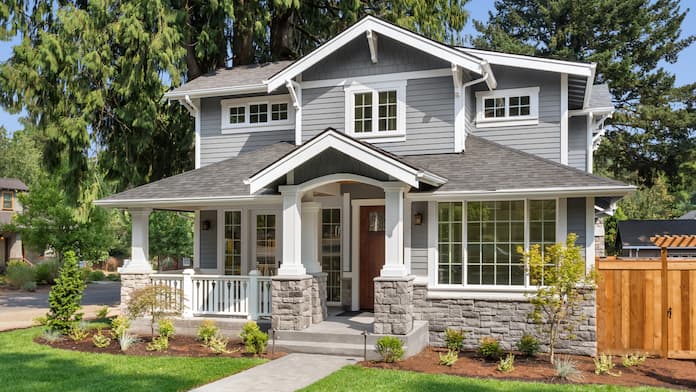
The cost of vinyl siding installation can be influenced by several factors as mentioned below:
The Size of Your House
- House Size (Sq ft) Price Range
- 1000 $4,000 - $5,000
- 1250 $5,000 - $6,250
- 1500 $6,000 - $7,500
- 1800 $7,200 - $9,000
- 2000 $8,000 - $10,000
- 2500 $10,000 - $12,500
- 3000 $12,000 - $15,000
The larger your house, the more you will pay for vinyl siding since the project will require more materials and labor.
Vinyl siding material prices typically range from $4 to $5 per square foot on average.
While you can estimate the cost based on your house size, a more accurate estimate can be obtained by directly measuring the surface area to be sided, which we will discuss in the next point.
Here’s a breakdown of the price for vinyl siding based on the house size:
Exterior Square Footage
The vinyl siding cost can increase if your house has a complex design with multiple stories, eaves, gables, and corners due to the extra labor and materials needed.
That’s why measuring the vinyl siding cost based solely on the actual square footage of the exterior walls that need to be covered with siding gives a more accurate estimate.
Remember that vinyl siding is commonly measured in “squares”, with one square covering 100 square feet of the exterior wall. A “box” is equal to two squares.
One “square” can cost anywhere between $130 and $1,000.
| Square Footage | Squares Needed | Price Range |
|---|---|---|
| 1000 | 10 | $1,300 - 10,000 |
| 1250 | 12.5 | $1,625 - $12,500 |
| 1500 | 15 | $1,950 - $15,000 |
| 1800 | 18 | $2,340 - $18,000 |
| 2000 | 20 | $2,600 - $20,000 |
Siding Style
The siding style you choose will affect your home’s appearance because each style has its own unique design and aesthetic.
Vinyl siding can imitate expensive materials like stone, wood, and brick. Most vinyl sidings have a light wood grain appearance, but pricier options can look like wood shake sidings, shingles, or logs.
| Siding Style | Average Price per Square Foot | Description |
|---|---|---|
| Beaded | $3 – $7 | Features a curved edge for a clean, upscale look. |
| Board and Batten | $4 – $9 | Vertical boards with strips over seams for a rustic farmhouse look. |
| Brick | $5 – $10 | Durable, classic brick look with good insulation. |
| Clapboard | $2 – $6 | Thin, longboards are installed horizontally with a small overlap. |
| Dutch lap | $3 – $9 | Deep shadow lines with hand-carved appearance. |
| Log | $5 – $10 | Rustic, cabin-like appearance with natural logs. |
| Scalloped | $4 – $9 | Decorative rounded edges, Victorian style. |
| Shake | $3 – $10 | Rough-textured wooden blocks for a traditional look. |
| Smooth | $2 – $6 | Clean, modern look with no texture. |
| Stone | $5 – $10 | Timeless, rustic look with excellent durability and low maintenance. |
| Traditional lap | $2 – $6 | Broad, overlapping planks provide strong shadow lines for a classic aesthetic. |
Siding Type
- Siding Type Cost per Square Foot
- Hollow $2 – $6
- Premium $3.50 – $9
- Insulated $8 – $10
Hollow Siding
Hollow vinyl siding is installed over rigid foam board or house wrap, leaving a gap between the vinyl planks and the wall with no insulation.
This type of siding is the most affordable but the thinnest and least durable option.
Hollow siding can cost anywhere between $2 and $6 per square foot.
Premium Siding
Premium siding, like hollow vinyl siding, is installed over house wrap or rigid foam board. However, it is of higher quality, being heavier, thicker, and more durable, making it a better choice for areas with extreme weather fluctuations.
Despite these advantages, it remains hollow and lacks insulation. The cost ranges from $3.50 to $9 per square foot.
Insulated Vinyl Siding
Insulated siding has rigid foam insulation attached to the back of each plank, making it more rigid and resistant to damage.
This type of siding is ideal for colder climates, offering increased energy efficiency. The cost ranges from $8 to $10 per square foot.
Labor
Generally, the vinyl siding labor cost per square foot ranges from $2 to $5, depending on the amount of siding installed.
Labor rates can vary depending on your location and the season. For example, rates tend to be higher in the summer due to increased demand compared to spring and fall.
Vinyl siding installation typically takes about a week, depending on the size of your house and the number of contractors working on the project.
Other Factors Affecting the Cost of Vinyl Siding
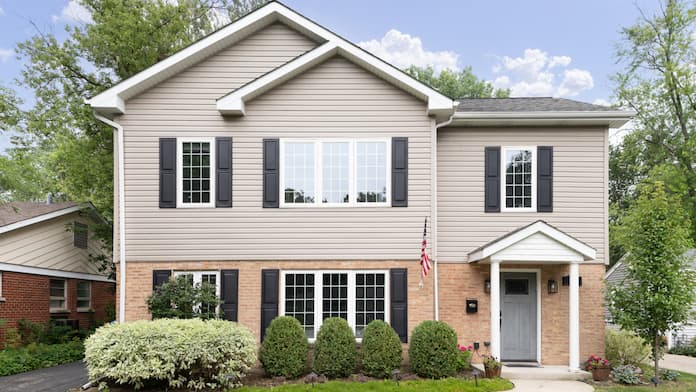
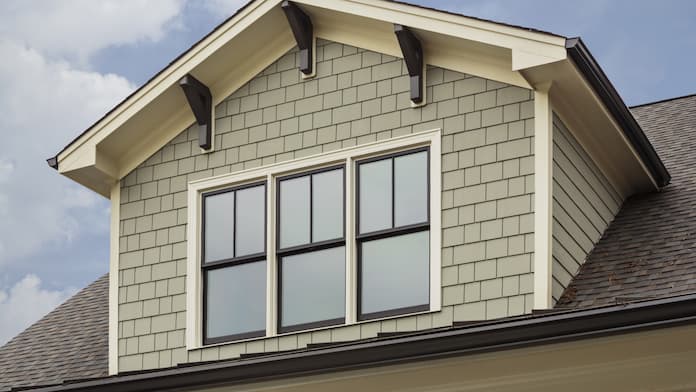
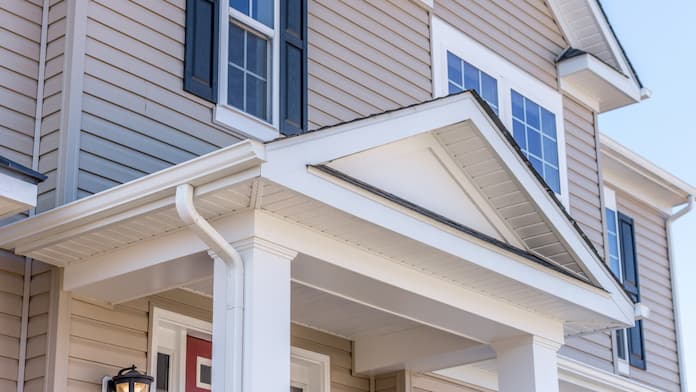
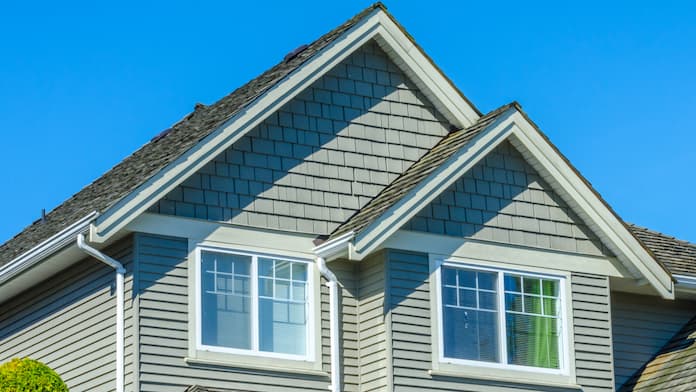
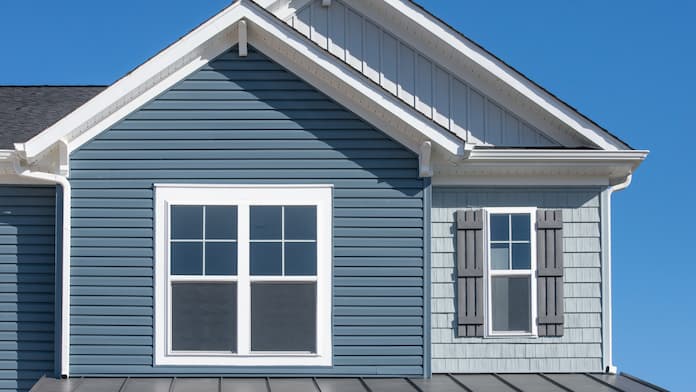
Several other factors can affect the cost of vinyl siding installation, which you should be aware of. Let’s look at them below.
Geographic Location
The cost of vinyl siding itself can vary by area. Regions with a lower cost of living often have lower rates than those with a higher cost of living.
Where you live also influences the type of siding you need. For instance, in extremely cold regions, you'll need to invest more in insulation and thicker materials, which raises the overall cost.
Conversely, in areas with high temperatures, vinyl siding might be more prone to warping and cracking. This not only increases costs due to the need for specialized materials but also means higher repair and maintenance expenses.
Quality
The quality of vinyl siding generally depends on the thickness of the siding.
Usually, economy-grade vinyl is 0.035 inches thick, and the highest-grade siding is 0.55 inches thick. However, most residential sidings are 0.042 inches to 0.048 inches thick.
The thicker the siding, the better the quality and the pricier it will be as thicker sidings are able to withstand harsh weather conditions and don’t sag under heavy rains or high temperatures, making them more durable.
Permits and Inspections
Depending on your location, you may need to obtain permits for installing vinyl siding.
Adding Siding Over Existing Siding
You may be able to install new vinyl siding over the existing foam board, brick, stucco, or wood siding, provided it is in good condition and securely fastened to your house. This approach can help you save significantly on installation costs.
Existing Siding Removal
If your existing siding is in poor condition, you'll need to remove it before installing new vinyl siding. It's not recommended to install new vinyl over old vinyl siding, even if it's in good condition.
When removing existing siding, consider the costs of installation, demolition, and disposal. You can expect to pay around $1,000 to $2,667 for the entire process.
Window Trimming and Soffits
Although window trimming and soffits enhance a home's aesthetics, they can significantly increase the total cost of vinyl siding.
These elements require skilled labor and additional materials for precise fitting and finishing. It's essential to discuss the costs with your contractor.
For window trimming, factors like the number, size, and shape of the windows can affect the overall cost. For soffits, the cost varies based on the type of material used and the installation difficulty, especially for multi-story homes or those with intricate roof designs.
Brand
According to Statista, the top three most used vinyl siding brands by construction companies in the US in 2018 were CertainTeed, Georgia-Pacific Vinyl Siding, and Alside.
Different brands have varying price points, which can affect your overall vinyl siding cost.
For example, brands like CertainTeed and Novik are on the higher end, while Alside and Georgia Pacific are more affordable, with costs starting at around $2.50 per square foot.
However, you should also consider the quality and durability of the materials offered by different brands. Premium brands often ensure their products last longer and perform better, leading to higher initial costs but potential savings in the long run.
Should You DIY or Hire a Professional for Vinyl Siding Installation?
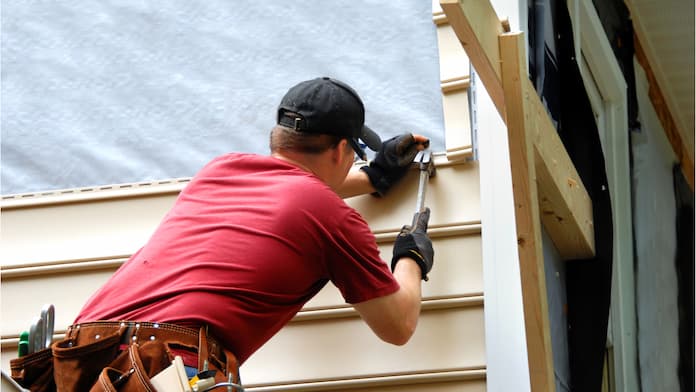
While vinyl siding installation might seem simple, it can be complex. How would you tackle tricky areas like dormers, windows, eaves, and gables? Do you know how to calculate the amount of siding needed or ensure different color batches match?
These are things a professional handles with ease, using the right tools and expertise.
You might save 30% to 50% on labor costs by installing vinyl siding yourself, but if it’s not done correctly, your home could become vulnerable to pests, water, and wind damage.
Saving money now by DIYing could lead to expensive repairs later. That’s why it’s best to hire a professional contractor for your vinyl siding installation, ensuring it’s done right and saving you hassle and stress in the long run.
How Do You Find a Professional to Install Vinyl Siding?
Since we suggest hiring a professional to install vinyl siding for the reasons mentioned above, it’s crucial to find the right one for the job.
You can visit the HomeBuddy website, answer a few simple questions about your project, and based on your answers, you’ll be connected to an expert and trusted local contractor. You can also ask questions and get a free estimate from the contractor.
Here are some tips to help you find the right installer for quality service at a good price:
- Start by asking your friends, family, or neighbors for referrals to trusted installers.
- Look for VSI (Vinyl Siding Institute) Certified installers as this certification ensures they have the proper training and adhere to industry standards.
- Contact several contractors to get free estimates and discuss your needs, material preferences, and budget during these consultations.
- Make sure the contractors are licensed and insured to protect against accidents or damages.
- Compare services based on scope, materials, warranties, and timelines. Don’t just go with the lowest bid as quality is important.
- Check online reviews and ask contractors for references from previous clients to assess their work quality and customer service.
- Are you licensed and insured?
- Can you provide references?
- What type of siding do you specialize in?
- What is included in your quote?
- How long will the project take?
- What is your warranty policy?
- How will you protect my property?
- Who will be onsite during the project?
- What are the payment terms?
- Can you show examples of similar projects?
Savvy Tips to Save Money on Vinyl Siding Installation
- Opt for simpler styles like smooth, traditional lap, or clapboard, which are cheaper.
- Skip thicker siding if you don’t need it.
- Remove the existing siding yourself to save on demolition costs.
- Check with your accountant for any state or local tax breaks for installing energy-efficient vinyl siding.
- Schedule installation outside the busy season to reduce labor costs.
- Choose lightly textured siding over heavily textured ones to save money.
- Shop around and compare all brands for better deals, as some contractors may push specific brands.
- Regularly clean and maintain siding to extend its life.
- If you’re replacing siding on multiple properties or a large area, ask suppliers if they offer bulk purchase discounts on materials.
Conclusion
Vinyl siding can cost anywhere from $6,000 to $16,400, depending on factors like style and type of siding, exterior square footage, labor rates, location, brands, and whether you need to replace old siding. To keep costs low, try our money-saving tips shared above and get free estimates from expert and reliable HomeBuddy local contractors.
Frequently Asked Questions
- What is the cheapest exterior for a house?
- Vinyl siding is the cheapest exterior option for a house. It costs between $4 to $5 per square foot, making it very affordable. It is also easy to install and requires low maintenance, making it a cost-effective choice over time.
- How do you maintain vinyl siding?
- To maintain vinyl siding, regularly inspect for damage and clean it at least once a year using mild detergent and water. Avoid using harsh chemicals. Trim nearby foliage and ensure proper drainage to prevent moisture issues. Repair any damage promptly and keep grills and heat sources away to prevent warping.
- Does vinyl siding add value to a home?
- Yes, vinyl siding adds value to a home. On average, installing new vinyl siding can give you around 68% return on investment. This makes it a cost-effective option for boosting curb appeal and enhancing the overall value of a property.
- How long does vinyl siding last?
- Vinyl siding typically lasts between 20 to 40 years, depending on factors like climate, maintenance, and quality of installation. With proper care, high-quality vinyl siding can last up to 60 years. Regular cleaning, timely repairs, and protecting it from extreme heat can extend its lifespan.
- How can you tell when it's time to replace your vinyl siding?
Signs that your vinyl siding needs replacement include visible cracks or gaps, bubbling or blistering, mold or mildew growth, faded color, swelling or warping, increased energy bills, and frequent need for repairs or painting. These issues indicate compromised integrity and poor insulation.




